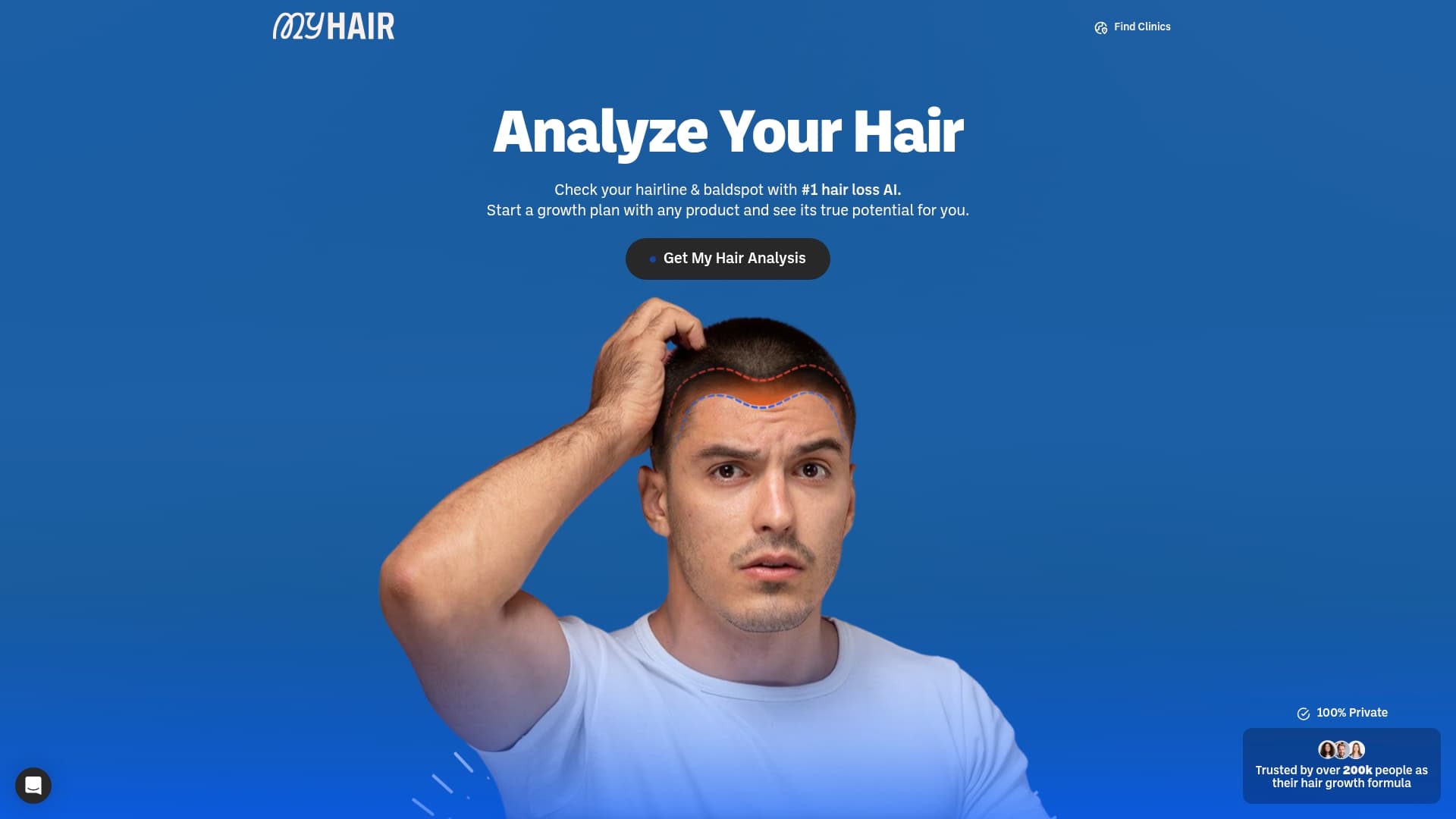Blog
Learning Materials
Shedding Capilar: Everything You Need to Know
Updated: November 16, 2025

Most people are surprised to learn that losing 50 to 100 hairs a day is completely normal. Shedding capilar is not a sign of poor health but a vital part of the hair’s natural growth cycle. When you understand how hair follicles work and what causes increased shedding, it becomes easier to tell the difference between everyday hair renewal and more concerning hair loss. This guide helps you decode what’s happening on your scalp so you feel more in control of your hair health.
Table of Contents
- What Is Shedding Capilar and Why It Happens
- Natural Phases of the Hair Growth Cycle
- Key Distinctions Between Shedding and Hair Loss
- Common Causes and Triggers of Shedding Capilar
- Managing and Reducing Excess Hair Shedding
Key Takeaways
| Point | Details |
|---|---|
| Natural Shedding is Normal | Losing 50-100 hair strands daily is part of the natural hair growth cycle and is considered healthy. |
| Understanding Hair Growth Phases | The hair growth cycle includes four phases: anagen, catagen, telogen, and exogen, each crucial for hair health. |
| Distinguishing Shedding from Hair Loss | Normal shedding is biological, while excessive hair loss may indicate health concerns, requiring professional evaluation. |
| Manage Shedding Through Lifestyle | Nutritional balance and stress management strategies can effectively reduce excessive hair shedding and promote healthier hair growth. |
What Is Shedding Capilar and Why It Happens
Shedding capilar is a natural and essential biological process where hair strands naturally fall out as part of the hair's growth cycle. According to homoeopathic journal, this phenomenon occurs through the systematic transition of hair follicles across different phases, ensuring continuous hair renewal and health.
The hair growth cycle consists of three primary stages: anagen (active growth), catagen (transition), and telogen (resting). During these stages, hair follicles go through complex processes that determine hair production, maintenance, and eventual shedding. ijarsct notes that this process is significantly influenced by multiple factors, including:
- Genetic predispositions
- Hormonal fluctuations
- Overall physical health
- Nutritional status
- Environmental conditions
Understanding shedding capilar helps individuals recognize what constitutes normal hair loss versus potential hair health concerns. Most people naturally lose between 50 to 100 hair strands daily, which is part of the body's regenerative process. When shedding exceeds this range or occurs with additional symptoms like scalp irritation or sudden patches of hair loss, it might indicate underlying health issues requiring professional assessment.
For more insights into managing your hair health, check out our guide on normal hair loss per day.
Natural Phases of the Hair Growth Cycle
The hair growth cycle is a complex and fascinating biological process that involves multiple intricate stages. According to the Hair Society, this cycle comprises four distinct phases that determine how our hair grows, develops, and eventually sheds.
Anagen Phase: Active Growth
During the anagen phase, hair follicles are actively producing new hair. This is the longest stage of the growth cycle, lasting anywhere from 2 to 7 years. At any given time, approximately 85-90% of your hair is in this growth stage, continuously generating new hair strands.
Catagen Phase: Transition
The catagen phase is a short transitional period lasting about 2-3 weeks. During this stage, hair follicles shrink and detach from the dermal papilla, preparing for the next resting phase. This is a critical reset moment in the hair growth cycle.
Telogen Phase: Resting
In the telogen phase, hair follicles remain dormant for approximately 3 months. Around 10-15% of your hair is in this resting stage, where no active growth occurs. Towards the end of this phase, old hair begins to prepare for shedding.
Exogen Phase: Shedding
The exogen phase is when hair strands actually fall out, making room for new hair growth. Losing 50-100 hair strands daily is considered normal and part of this natural regenerative process.
Understanding these phases helps individuals recognize the complexity of hair growth and track their hair's health journey. Each phase plays a crucial role in maintaining a healthy, robust head of hair.
Key Distinctions Between Shedding and Hair Loss
Understanding the difference between normal hair shedding and hair loss is crucial for maintaining healthy hair and recognizing potential health concerns. According to Wikipedia, hair shedding is a natural part of the hair growth cycle, whereas hair loss involves excessive shedding or the inability of hair to regrow, leading to noticeable thinning or baldness.
Normal Hair Shedding
Normal hair shedding is a biological process where 50-100 hair strands fall out daily as part of the natural hair renewal cycle. This process is completely healthy and ensures that old, potentially damaged hair is replaced with new, healthy strands. During this phase, hair follicles naturally transition through their growth stages, with new hair ready to replace the shed strands.
Abnormal Hair Loss
Wikipedia highlights that hair loss occurs when there is an abnormal disruption in the hair growth cycle. This can manifest through several key indicators:
- Excessive hair fall beyond 100 strands per day
- Visible thinning of hair
- Patches of baldness
- Inability of hair to regrow after shedding
Some common causes of abnormal hair loss include:
- Hormonal imbalances
- Nutritional deficiencies
- Stress
- Medical conditions
- Genetic predispositions
If you're experiencing persistent or unusual hair loss, understanding the signs of hair fall can help you determine when to seek professional advice. While occasional increased shedding is normal, consistent or significant hair loss might indicate underlying health issues that require medical attention.
![]()
Common Causes and Triggers of Shedding Capilar
Hair shedding can result from a complex interplay of biological, environmental, and physiological factors. According to arXiv research, multiple elements can disrupt the normal hair growth cycle, leading to increased hair shedding and potential long-term hair health challenges.
Biological Triggers
Several internal biological mechanisms can significantly impact hair shedding. Wikipedia highlights autoimmune conditions as a critical factor, where the body's immune system mistakenly attacks hair follicles, causing unexpected and dramatic hair loss.
Key Biological Factors Affecting Hair Shedding
- Hormonal Imbalances: Fluctuations in thyroid, testosterone, and estrogen levels
- Genetic Predispositions: Inherited traits that influence hair follicle sensitivity
- Immune System Disorders: Conditions that cause follicular inflammation
- Nutritional Deficiencies: Lack of essential vitamins and minerals
Environmental and Lifestyle Triggers
External factors play an equally significant role in hair shedding. Chronic stress, poor nutrition, and environmental pollutants can accelerate hair loss. Factors like extreme weight loss, high-stress occupations, and lack of proper hair care can compound these challenges.

Understanding these triggers becomes crucial in managing hair health. learn more about stress-related hair loss to develop proactive strategies for maintaining healthy hair growth.
Managing and Reducing Excess Hair Shedding
Reducing excessive hair shedding requires a comprehensive and strategic approach. According to International Journal of Dental and Research, effective management involves understanding the hair growth cycle and addressing specific factors that disrupt healthy hair production.
Nutritional Strategies
Properly nourishing your body plays a crucial role in minimizing hair shedding. Nutritional balance directly impacts hair follicle health, supporting robust growth and reducing unnecessary hair loss. Key nutrients essential for hair strength include:
- Protein
- Iron
- Zinc
- Vitamin D
- Biotin
- Omega-3 fatty acids
Stress Management and Lifestyle Modifications
International Journal of Research and Publication emphasizes that identifying and addressing underlying causes is critical in restoring normal hair growth patterns. Stress can significantly accelerate hair shedding, making relaxation techniques and lifestyle adjustments fundamental.
Recommended stress reduction strategies include:
- Regular meditation
- Consistent sleep schedule
- Regular exercise
- Mindfulness practices
If you're struggling with persistent hair shedding, explore effective stress hair loss remedies to develop a personalized approach to hair health management.
Take Control of Your Shedding Capilar with Personalized AI Insights
If you're noticing more hair shedding than usual and want to understand whether it is normal or a sign of something deeper, you are not alone. Shedding capilar can feel worrying especially when you want to protect your hair’s natural growth cycle. Common challenges include differentiating normal shedding from excessive loss, identifying triggers such as stress or nutrition, and finding effective ways to manage and reduce hair fall.

Discover how MyHair.ai uses AI-based hair health analysis to provide you with a clear picture of your hair condition. With personalized growth projections and tailored product recommendations, you can address your specific hair shedding concerns confidently. Don't wait for shedding to worsen. Start tracking your hair health today at MyHair.ai and take the first step toward stronger, healthier hair.
Frequently Asked Questions
What is shedding capilar?
Shedding capilar refers to the natural process where hair strands fall out as part of the hair's growth cycle, enabling continuous renewal and health of hair.
How much hair shedding is considered normal?
Most individuals naturally lose between 50 to 100 hair strands daily, which is a normal part of the hair renewal cycle.
What are the common causes of excessive hair shedding?
Excessive shedding can be caused by biological factors, including hormonal imbalances, genetic predispositions, stress, nutritional deficiencies, and environmental conditions.
How can I manage and reduce excessive hair shedding?
To manage excessive shedding, focus on a balanced diet rich in nutrients (like protein, iron, and biotin), practice stress management techniques, and maintain a proper hair care routine.